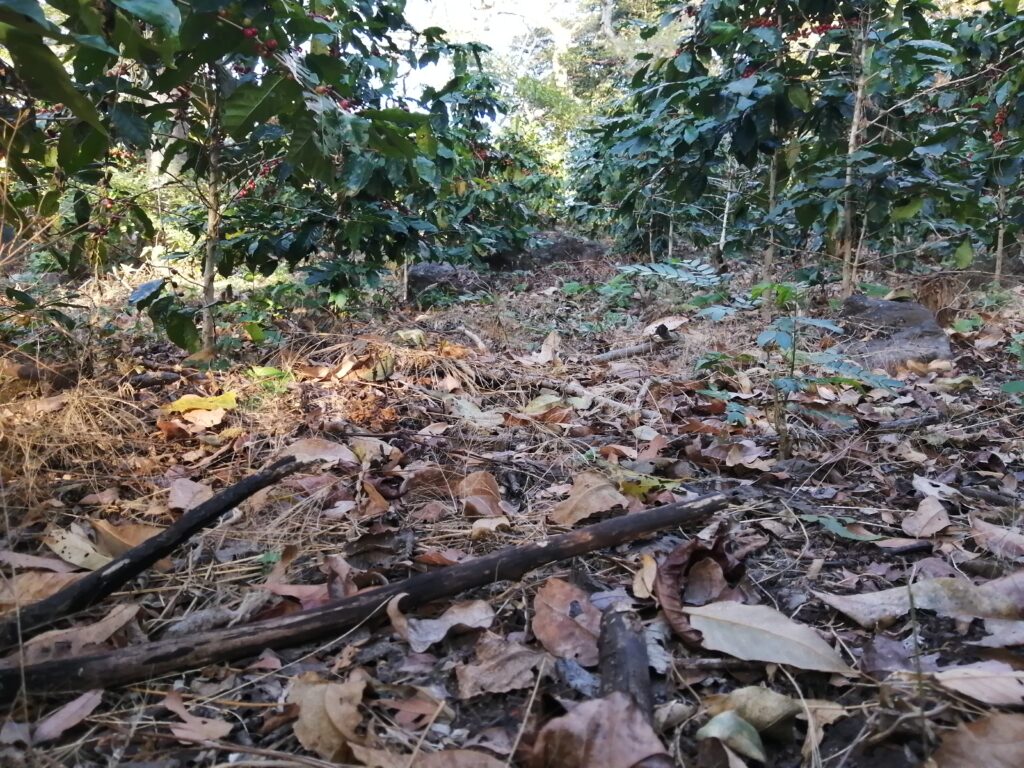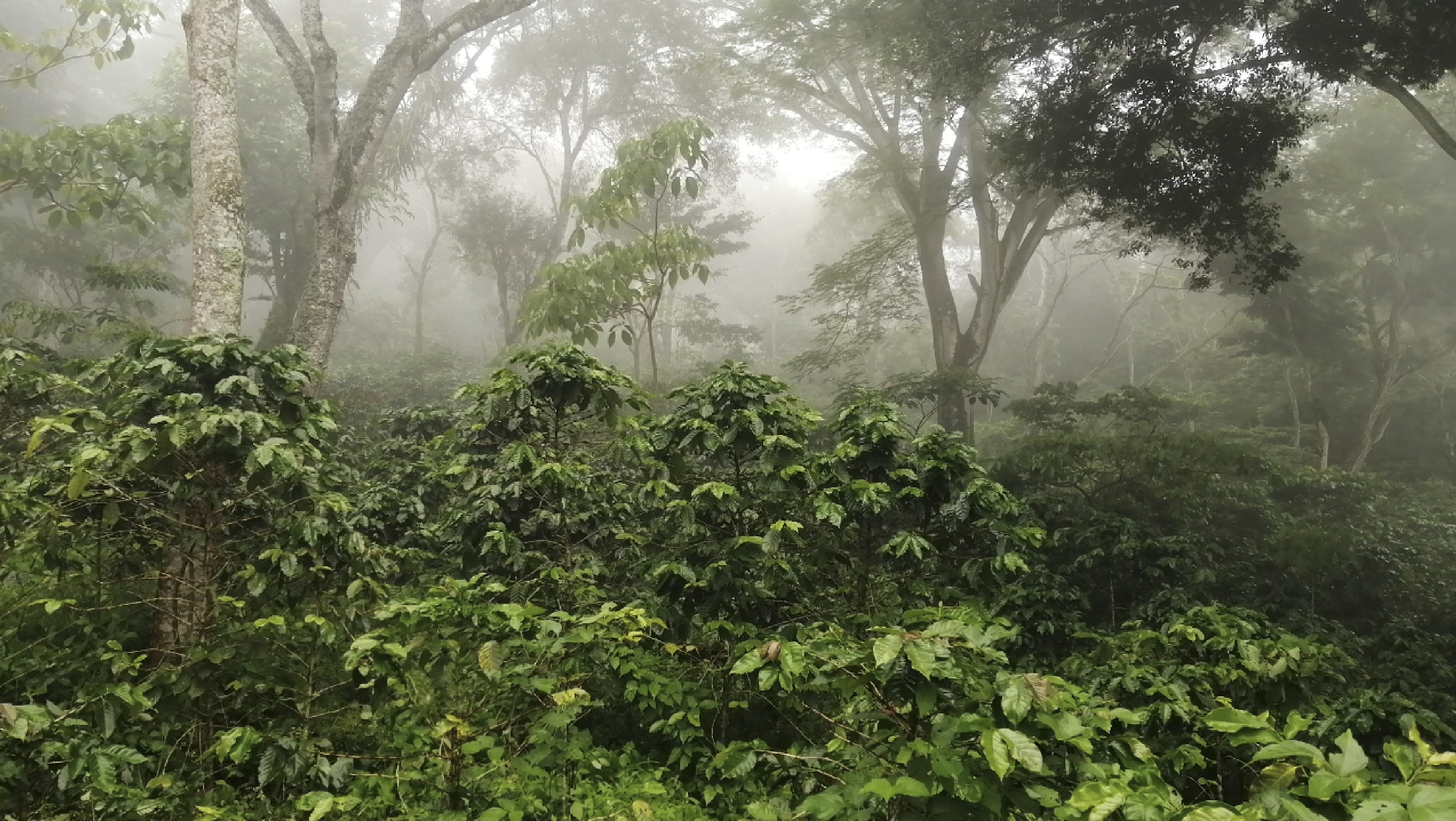Shade-Grown Coffee in an Agroforestry System
In another article, we discussed how coffee plants could be cultivated using rain or installing an irrigation system. When it comes to solar exposure, there are also two methods for handling this crop. The first one is done by allowing your coffee trees to be the only type of plants in your plantation, eliminating all trees in the area. The second one is growing coffee trees in coexistence with other species of trees that provide shade and regulate the amount and intensity of solar light.
Sun-grown coffee is a practice mainly applied to Robusta trees as they are hardier and can tolerate a wider range of growing conditions. However, the high demand for the bean has taken many Arabica producers to turn to this practice to boost their yield. Even though it is a fact that coffee grown in full sun can be more susceptible to disease and pests and have higher acidity and lower sugar content. We should keep in mind that nowadays, many complementary practices and products can be viable solutions to compensate for these factors. From a purely profitable point of view, this method seems like the way to go.
So, to understand why the shade-grown system is used, we should look at its added value from a different perspective, considering not only the yield’s result but also how environmentally friendly it is.
This environmental practice achieves the creation of an agroforest where land is not lost to agriculture but instead incorporates farming into a fully functional ecosystem. Some benefits of land management by agroforestry are:
- Soil health and water retention: Trees in agroforestry systems can help to improve soil health by adding organic matter, reducing erosion, and increasing water retention. This can lead to improved and consistent crop yields and can help to reduce the need for irrigation.

El Chorro Coffee Plantation, Santa Rosa, Guatemala. The land’s soil is covered all year round with leaves, branches, and fruits from trees that grew naturally on the plantation.
- Carbon sequestration: Trees absorb carbon dioxide (CO2) from the atmosphere and store it in their biomass, which helps mitigate climate change’s effects. Agroforestry systems can be designed to maximize carbon sequestration.
- Agricultural system resilience: Agroforestry can help increase agricultural systems’ resilience to environmental and economic disturbances such as droughts, floods, and market fluctuations. This is because it provides multiple sources of income and can help to reduce the risk of crop failures. An example of this is a lot on my farm, where Palo Blanco trees (Tabebuia donnell-smithii) grow naturally. Instead of cutting down trees, I have learned to coexist with them and only eliminate those that have begun to dry out and die. This allows me to control the fall so that it does not break my coffee bushes, and by selling the timber before it rots, extra income for maintaining the plantation is acquired.

El Chorro Coffee Plantation, Santa Rosa, Guatemala. Lot with Tabebuia donnell-smithii.
- Biodiversity and ecosystem services: Agroforestry promotes biodiversity by providing habitats for a wide range of species, from birds and insects to mammals and reptiles. This increased biodiversity can also lead to enhanced ecosystem services such as pollination and pest control. An example is that these areas harbor Epiphytes that enhance bird diversity; birds are natural predators of insects and other threats to crops, such as the berry borer. Plantations with few to no bird diversity have shown an increase in these pests.
- Climate regulation: A canopy of trees and plants above your crop provides protection from the sun and helps to maintain a more consistent temperature and humidity, which can help to improve crop yields. This is a point that is extremely important for the development of my plantation. As I am located in an area on the hillside of the Sierra Madre, in the midlands about 40 km away from the Pacific Ocean, the climate in my region can get quite hot and sunny. However, preserving natural areas has allowed the cloud forest to thrive, especially during dawn and winter. This allows a gradual development of flavors and aromas in my coffee berries as they rip at a moderate pace.
Land management in an agroforestry – coffee plantation system
Practicing agroforestry involves managing not only the development of your plantation but also the surrounding forest. The first step is to analyze the current situation of your land. Are there any trees around? Is it empty, with only grass growing on it? What are the native species of trees surrounding you? Native species of trees have been kept on my plantation since my grandparents first started growing coffee, so this means that we have learned to coexist by pruning them, eliminating any branches that cause an excess of shadow, but always keeping in mind that not too many branches should be cut to avoid killing the trees. But if you are starting from scratch with your agroforestry practices, I advise you to look for native species of trees that don’t grow too tall so that it’s easy to manage their care.
Just like every single aspect of coffee growing, the amount of shadow you’ll need will depend on many factors:
- When the temperature on your land is high, humidity and moisture are scarce, and soil fertility is low, it is important to maintain a 50 to 70% range of shadow. Farms located at lower altitudes typically require more trees to help regulate the temperature.
- Keep a 25 to 30% range of shadow if your plantation registers low temperatures and high humidity and moisture. Highland farms tend to be under these conditions.
- In hotter climates, tree spacing for your forest should vary between 6 x 8 m to 8 x 10 m (20 x 26 to 26 x 33 ft) in low and midlands, while highlands should keep spacings of 10 x 10 m and 12 x 12 m (33 x 33 and 40 x 40 feet) .
References
Smithsonian’s National Zoo & Conservation Institute, Ecological Benefits of Shade-Grown Coffee. https://nationalzoo.si.edu/migratory-birds/ecological-benefits-shade-grown-coffee
All About Coffee by William H. Ukers, 1935, Chapter XV: The botany of the Coffee Plant. P. 122-145 https://www.cluesheet.com/All-About-Coffee-XV.htm
Polinización del Café por Apis Mellifera L. y Otros Insectos en Costa Rica, F. Bobadilla, W. Ramírez B., 1991, Turrialba Vol. 41, No. 3, P.285-288 https://repositorio.catie.ac.cr/bitstream/handle/11554/10147/A0790e03-03.pdf?sequence=1&isAllowed=y
La Apicultura y el Café, una Combinación para Reducir los Efectos del Cambio Climático en la Región, Instituto Interamericano de Cooperación para la Agricultura IICA, Costa Rica. https://www.iica.int/es/prensa/noticias/la-apicultura-y-el-cafe-una-combinacion-estrategica-para-reducir-los-efectos-del
Guía Técnica de Caficultura, ANCAFÉ 2018, P.21.
Coffee plant History and general Information
Coffee Plant Information – Morphology
Coffee Genetics and Variety Selection
How to Select, and Treat Coffee Seeds
Germination of Coffee Seeds and Creation of Seedbeds for Planting
Coffee Trees Planting and Plant Spacing
How to Prune your Coffee Trees in an Agroforestry System
Shade-Grown Coffee in an Agroforestry System
Coffee Tree Flowering and Pollination
From Rainwater Harvesting to Irrigation of Coffee Trees
Coffee Tree Fertilization Requirements
Weed Management in a Coffee Plantation









































































